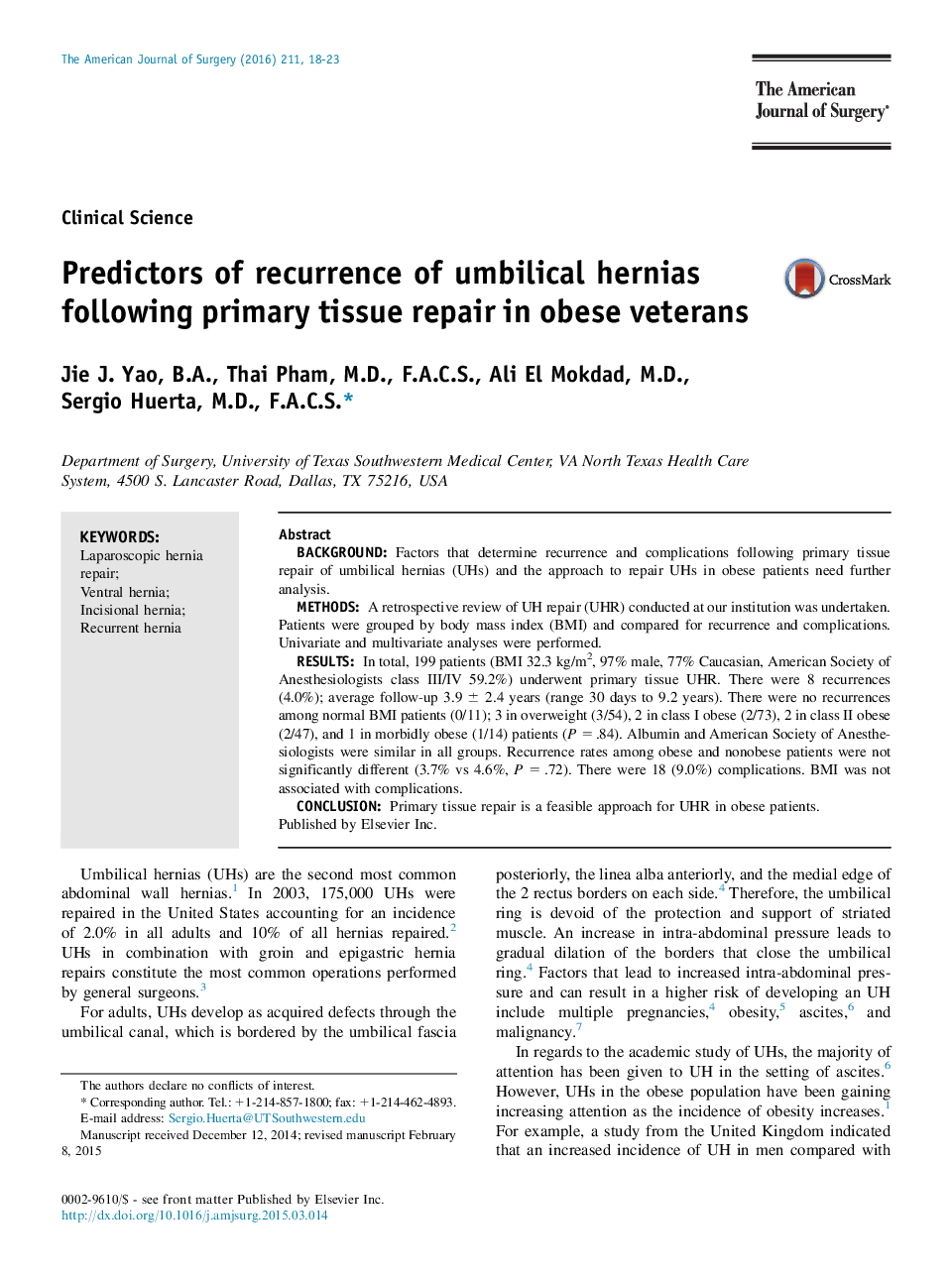| Article ID | Journal | Published Year | Pages | File Type |
|---|---|---|---|---|
| 6250415 | The American Journal of Surgery | 2016 | 6 Pages |
â¢Mesh repair in UHs leads to a number of complications.â¢Laparoscopy adds time and cost to an operation and clear guidelines for the repair of an UH do not exist. The following report examined 199 UHs repaired via open primary tissue repair in a cohort of patients that was largely composed of obese patients.â¢We demonstrate no association of BMI with recurrence. Recurrence was 4.0% and the complication rate was 9.0%.â¢BMI was not associated with complications.
BackgroundFactors that determine recurrence and complications following primary tissue repair of umbilical hernias (UHs) and the approach to repair UHs in obese patients need further analysis.MethodsA retrospective review of UH repair (UHR) conducted at our institution was undertaken. Patients were grouped by body mass index (BMI) and compared for recurrence and complications. Univariate and multivariate analyses were performed.ResultsIn total, 199 patients (BMI 32.3 kg/m2, 97% male, 77% Caucasian, American Society of Anesthesiologists class III/IV 59.2%) underwent primary tissue UHR. There were 8 recurrences (4.0%); average follow-up 3.9 ± 2.4 years (range 30 days to 9.2 years). There were no recurrences among normal BMI patients (0/11); 3 in overweight (3/54), 2 in class I obese (2/73), 2 in class II obese (2/47), and 1 in morbidly obese (1/14) patients (P = .84). Albumin and American Society of Anesthesiologists were similar in all groups. Recurrence rates among obese and nonobese patients were not significantly different (3.7% vs 4.6%, P = .72). There were 18 (9.0%) complications. BMI was not associated with complications.ConclusionPrimary tissue repair is a feasible approach for UHR in obese patients.
